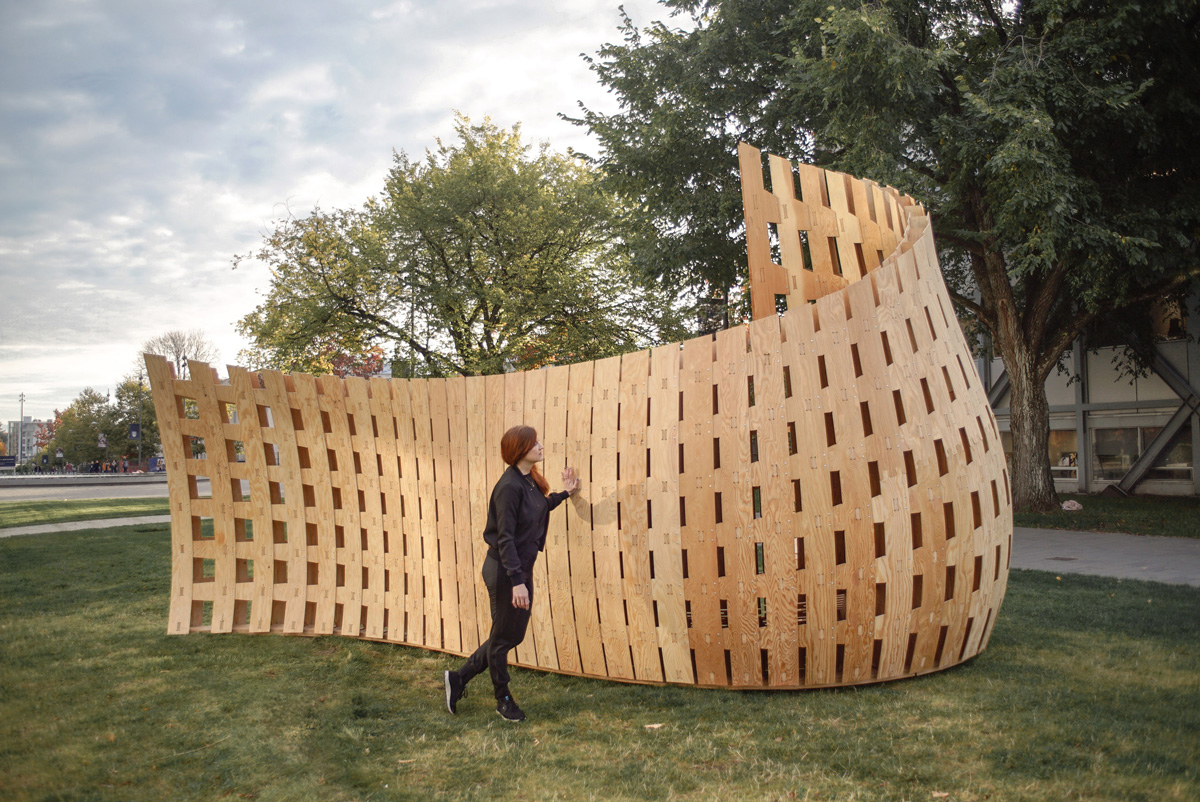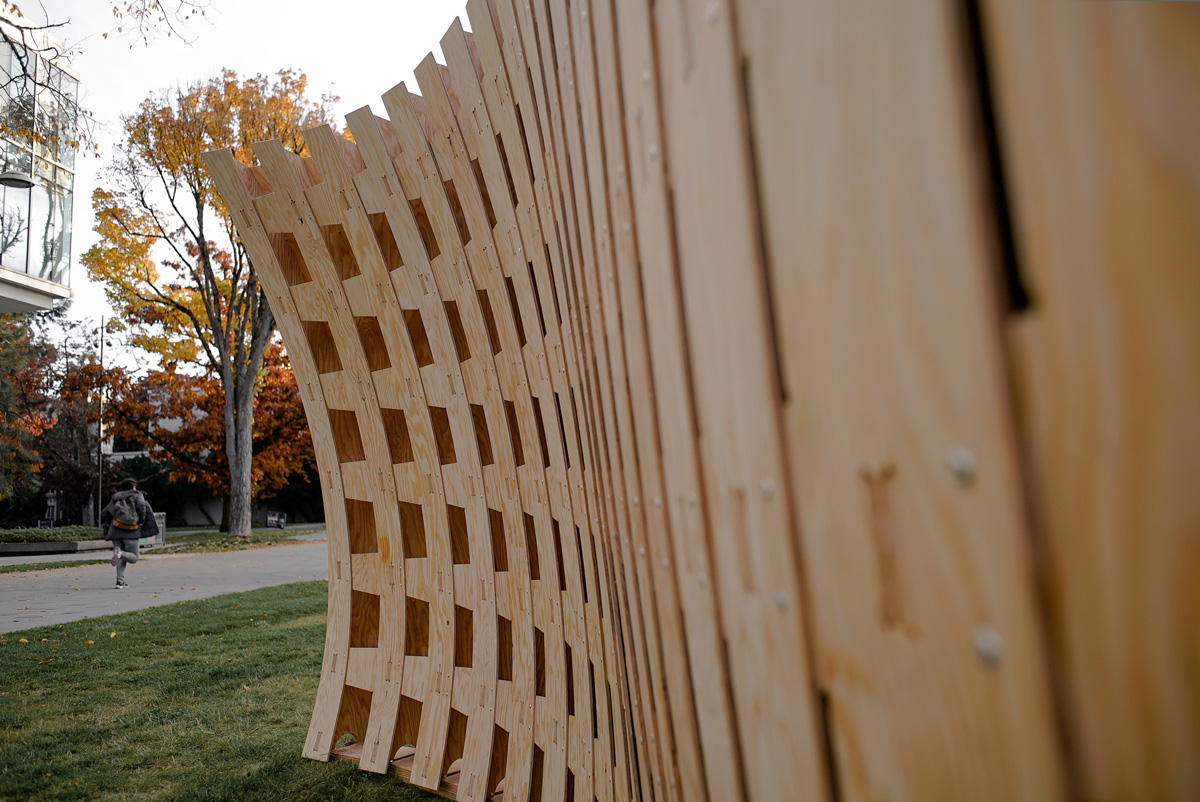An urban intervention essentially ushers a function and an aesthetic appeal in representing the drama it’s about to unfold. The Wander Wood Pavilion is a robotically fabricated wooden bench carved and sliced by students, curving a form using fundamental pieces enthralling every eye on the campus of the Vancouver University of British Columbia.
Wood was chosen for being highly sustainable and a renewable resource. The integration of robots slashes the curved wooden slats and interlocks to form the sculptural bench. 15 architecture students and 21 external partners, teamed up to fabricate and assemble the wooden installation for the university’s public green using parametric softwares and computational tools.
The design convenes as two rows of wooden slats steadily altering their shape to envisage the structural framework, rising and meandering to a peak. The exterior abuts and configures as a rounded shell, partially enclosing the public bench streaming along the bends.
In conspiring the organic shape in wood, the team inculcated digital 3D modelling and then segmented the form into the individual sections cut and arranged using robotic technology. The students visioned the Wander Wood Pavilion as an experimental structure capable of demonstrating innovative technologies and material development. The applications harness the unique properties of wood that animates public spaces.
The design entails two rows of wooden slats, piecing and grooving together to form the structure, with the exterior face bending in and then spilling out. An array of wooden teeth scrambles onto each section overlapping the pieces to be screwed in unison.
About 2,200 rivets carve into the crevasses of the form. David Correa, an architecture professor at the University of Waterloo ensured and guided the students along with the entire operation. Initially, the design was worked out in an indoor workshop called Advanced Wood Processing centre and later moved in sections to the site.
The slats are segmented at the base into zig-zagged sections featuring the curve on the bench, with an inviting aura for the public. The Wander Wood Pavilion is one of the several outputs developed by the team using the same fabrication. The overall aim showcases how timber construction can be adapted to compose a variety of structures using robotic technology and captivating sustainable actions.
Images by David Correa
Design & Development
David Correa
University of Waterloo, llLab Design
Oliver David Krieg
LWPAC+IC
AnnaLisa Meyboom
UBC SALA
UBC Project Leads
Jason Chiu
Jörn Dettmer
UBC Centre for Advanced Wood Processing
Dean Gregory
Campus and Community Planning
David Gill
UBC SEEDS Sustainability Program
Student participants
Zahra Asghari, John Chan, Selina Chau, Jessica Chen, Alex Floyd, Emily Kazanowski, Haobo Liu, Jia Liu, Bryn Martin, Jenna Ratzlaff, Theo Van Vugt, Trevor Vilac, Bahar Ziraknejad
Industry participants
Ivan Antoniw, Tony Bojarsky, Nelson Brito, Jamie Connolly, Andrew Drakeford, Mahdiar Ghaffarian, Elton Gjata, Michael Hiebert, Marco Kneifel, Logan Mohr, Aaron Oussoren, Jason Ramelson, Majd Sukkarieh, Taryn Sheppard
Teaching Assistants
Stuart Lodge, Derek Mavis
Funding
Forest Industry Innovation
This project is a collaboration between students, staff, faculty, and external partners as part of UBC’s SEEDS Sustainability Program
































Leave a comment